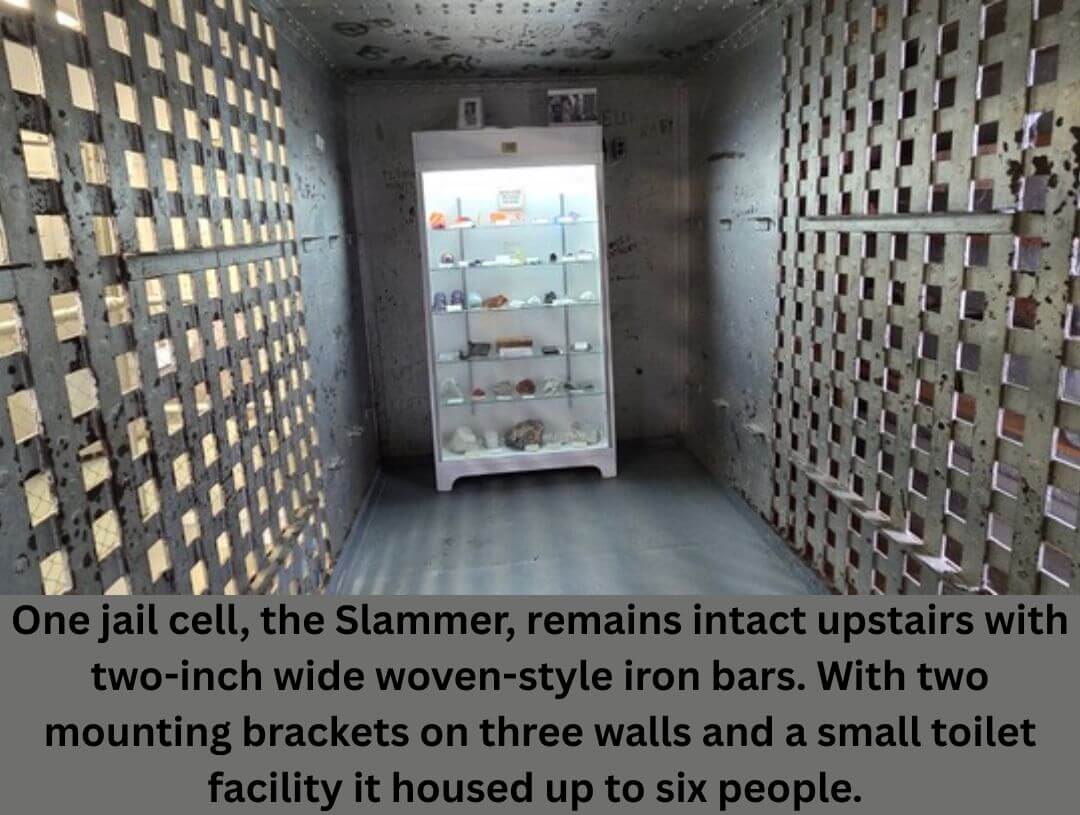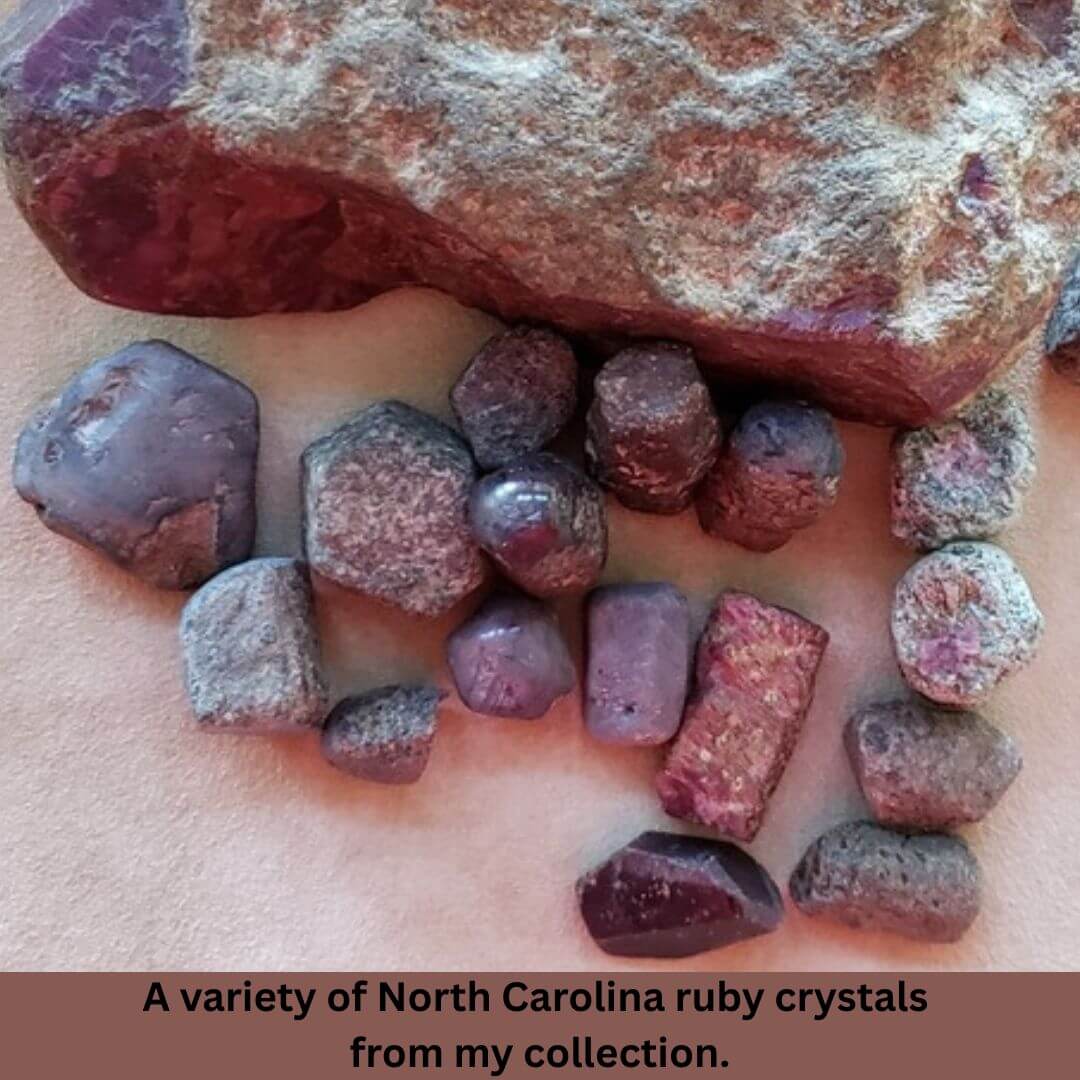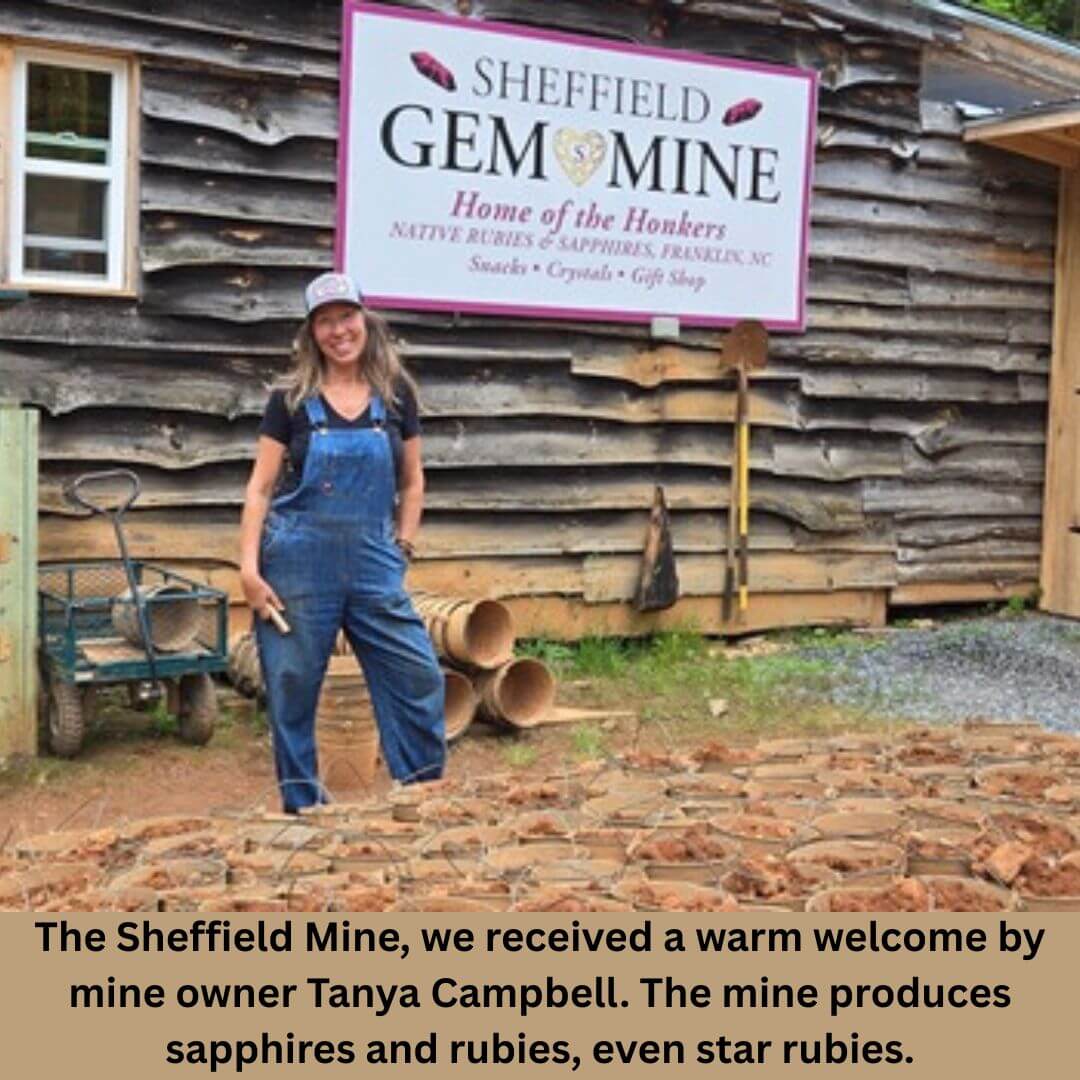This year, during my trip to western North Carolina, I had the opportunity to return to Franklin, the town nestled in the heart of the Blue Ridge Mountains at the foothills of the Great Smoky Mountains. Franklin is just over an hour’s drive west of Asheville.
Franklin is known as the “Gem Mining Capital of the World,” with several mines producing corundum, including sapphires and rubies, as well as garnets and quartz. Some corundum crystals are exceptionally large; most are opaque, but many show a perfect hexagonal crystal shape. The mines are spread around Cowee Valley in Macon County, a short drive from downtown Franklin.
The Franklin Gem & Mineral Society & Museum
Ahead of my trip, I connected with Stacy Walbridge, the past President of the Franklin Gem & Mineral Society, and Susan Ray, the society’s current President, who were kindly willing to open the museum for a private tour. I rode to Franklin with two very good friends from Maryland after our EFMLS Wildacres Workshop.
The wonderful Franklin Gem & Mineral Museum is situated inside the Old Macon County Jail, a simple, red-brick, two-story building. The first thing to notice outside, besides the bars on the windows - remnants of the old jail - is the huge museum banner celebrating 50 years on May 25, 2024. That is a huge accomplishment!
History of the Old Macon County Jail 
The Macon County Old Jail was built in 1850, but by 1972, it had stood abandoned for over 20 years after the construction of the new jail. The Franklin Gem & Mineral Society had just been established a few months earlier, but by the end of 1972, the club’s membership topped 177. The club reached out to the County Commission and requested to open a museum in the old jail. The request was granted, and after months of fundraising and over 2000 hours of volunteer work, the Franklin Gem & Mineral Museum opened its doors to the public on May 25, 1974.
One cell, the Slammer, remains intact upstairs with two-inch-wide woven-style iron bars. It was installed in 1873 and used until 1972. With two mounting brackets on three walls and a small toilet facility, it could house up to six male inmates at a time. A women’s cell also remains, with thinner rod bars, serving today as the museum’s restrooms. This is for sure an extraordinary historical feature inside a gem and mineral museum. A cabinet exhibit inside the Slammer features rocks used to make glass.
The Franklin Gem & Mineral Museum Collections
The museum has eight rooms filled with thousands of specimens of gems, minerals, fossils, Native American artifacts, fluorescent minerals, and seashells.
I absolutely loved the North Carolina Room, filled with beautiful specimens, representative of this state’s rich mineral wealth. Two corundum/ruby crystals caught my attention. The first one, a stunning, enormous crystal weighing 48 ½ pounds, approximately a foot tall, was mined at Corundum Hill in Macon County in 1884, and a smaller ruby crystal weighing 2 ¼ pounds. Ruby is an aluminum oxide, with chromium elements responsible for its red coloration, and iron for its brown stains. Rubies highly fluoresce under a UV light.
 Corundum mining near Franklin began in 1867, when Hiram Crisp (a Macon County farmer) found some unusual hard rocks in his field and asked Professor C.D. Smith (North Carolina’s assistant state geologist) to identify them. Corundum was very valuable commercially due to its high hardness and was also used as an abrasive. Crisp deeded half the interest in his land to the professor, and later sold the land to Ward-Jenks Corundum Mining Company (Col. Charles W. Jenks, of St. Louis, Mo., and Mr. E.B. Ward, of Detroit). The Tiffany Company had a high interest in the large red rubies. The Corundum Hill Mine operated until 1902, with a brief reopening during World War I. Large rubies were often found by the miners. In 1906, various shades of gem rubies were discovered at Corundum Hill Mine (near Highlands), as per a U.S. Geological Survey
Corundum mining near Franklin began in 1867, when Hiram Crisp (a Macon County farmer) found some unusual hard rocks in his field and asked Professor C.D. Smith (North Carolina’s assistant state geologist) to identify them. Corundum was very valuable commercially due to its high hardness and was also used as an abrasive. Crisp deeded half the interest in his land to the professor, and later sold the land to Ward-Jenks Corundum Mining Company (Col. Charles W. Jenks, of St. Louis, Mo., and Mr. E.B. Ward, of Detroit). The Tiffany Company had a high interest in the large red rubies. The Corundum Hill Mine operated until 1902, with a brief reopening during World War I. Large rubies were often found by the miners. In 1906, various shades of gem rubies were discovered at Corundum Hill Mine (near Highlands), as per a U.S. Geological Survey
Several other museum displays include a large slab and a cabochon of rhodolite garnets in quartz, bronzite, and peridot all from Macon County, blue sapphires from Canton in Haywood County, quartz conglomerate from Cherokee County, ruby in amphibolite from Clay County, feldspar from Swain County, Crabtree emeralds from Spruce Pine, unakite with epidote from Mitchell County, serpentine and blue kyanite from Yancey County, and mica sheets with inclusions from Macon County.
In their State Room, minerals from 49 states are displayed, including Herkimer ‘diamonds’ (quartz crystals) from New York, while in the World Room are pyrite cube specimens from Spain, aquamarine from Pakistan, opalized belemite, ammolite from Canada, and a 436-pound aquamarine crystal from Brazil.
The Indian Artifacts Room is a wonderful tribute to the local Native American art and culture, with stone manos and metates, arrowheads, strands of trade beads, pottery, and tools. Stacy Walbridge shared with us that they had reached out for expert advice from local tribes for setting up this exhibit.
The Fluorescent Room, a favorite display for young and adult visitors, holds a large mineral variety, briefly narrated, with two ultraviolet light levels.
Locally made artist jewelry and minerals are available for sale at their small gift shop. There is also a library and a workshop where they teach lapidary classes.
The Franklin Gem & Mineral Society
The Franklin Gem & Mineral Society is a founding member of the Southeast Federation of Mineralogical Societies (SFMS) and a member of the American Federation of Mineralogical Societies (AFMS). Their monthly meeting is held on the last Thursday of the month. Their annual gem show is held over Mother’s Day weekend. Visit them at https://fgmm.org
The Sheffield Mine
The Sheffield Mine is located about 8.7 miles northeast of downtown Franklin. The mine, once owned by Tiffany’s, has been open to the public for the past 60 years. It produces sapphires and rubies, even star rubies. The Sheffield mine is promoted as “Home of the honkers”, as large-size ruby crystals weighing between 30 and 100-plus carats are discovered. During an earlier trip, my husband found a 117-carat honker ruby crystal. They wrote his find on the board, gave him a certificate, and took a Polaroid photo, which added excitement to a fun day. 
We visited the mine after our museum visit and received a warm welcome from the relatively new mine owner, Tanya Campbell. She said jokingly, “I was looking for land and purchased land with a mine!” Tanya’s right-hand miner, Richard, who has worked at that mine for the past 17 years, was wonderful and showed us his screening techniques. We screened a native bucket, but, unfortunately, this time I only found a few tiny ruby crystals, not lucky to have found any “honkers”.
The Sheffield Mine has two covered flume lines allowing many people to enjoy gem mining in the shade while overlooking a pond with beautiful water lilies. Rocks have to be scrubbed and cleaned well to locate the ruby crystals. It takes about an hour to sort through a native bucket. Admission to the mine is $10, and buckets range from $5 for native buckets to up to $200 for enriched, salted, or so-called “rainbow” buckets. The Mine is open every day from 10 am to 5 pm, April 1st to October 31st. They also just finished their lodging cabin for rentals and campground. Visit them at www.sheffieldmine.com Tel. (828) 369-8383
Other Area Mines
Several more ruby and sapphire mines are in the area, including the Gold City Gem Mine, Mason Mountain Mine & Cowee Gift Shop where in the past we found rubies and rhodolite garnets, Mason’s Ruby & Sapphire Mine, Cherokee Ruby & Sapphire Mine, Old Cardinal Gem Mine, Highlands Road Gem Mine, and Rose Creek Mine.
Whether you are a gem and mineral enthusiast and love to learn about the local mining history, a true rockhound screening native buckets for local gems, or simply enjoying a recreational day with the family, there is something for everyone in Franklin.
 Helen Serras-Herman, a 2003 National Lapidary Hall of Fame inductee, is an acclaimed gem sculptor and FGA gemologist with over forty years of experience in unique gem sculpture and jewelry art. See her work at www.gemartcenter.com and her business Facebook page at Gem Art Center/Helen Serras-Herman. All Photos © Helen Serras-Herman
Helen Serras-Herman, a 2003 National Lapidary Hall of Fame inductee, is an acclaimed gem sculptor and FGA gemologist with over forty years of experience in unique gem sculpture and jewelry art. See her work at www.gemartcenter.com and her business Facebook page at Gem Art Center/Helen Serras-Herman. All Photos © Helen Serras-Herman




